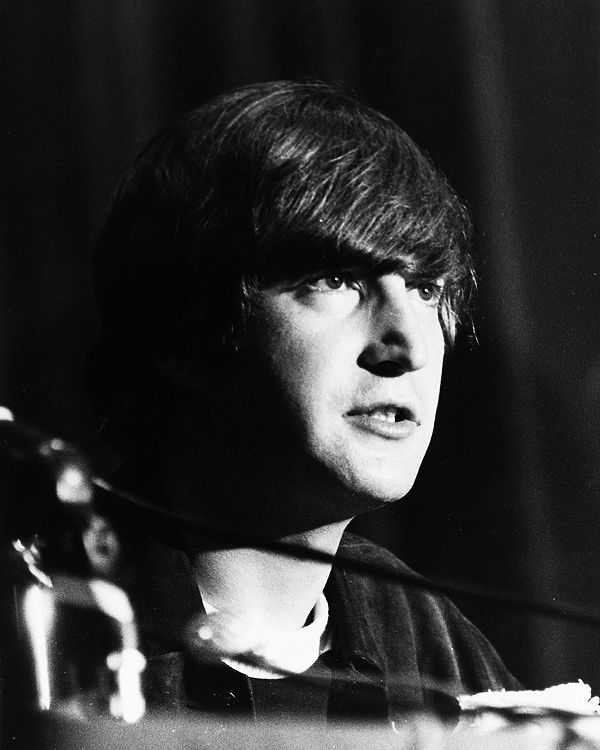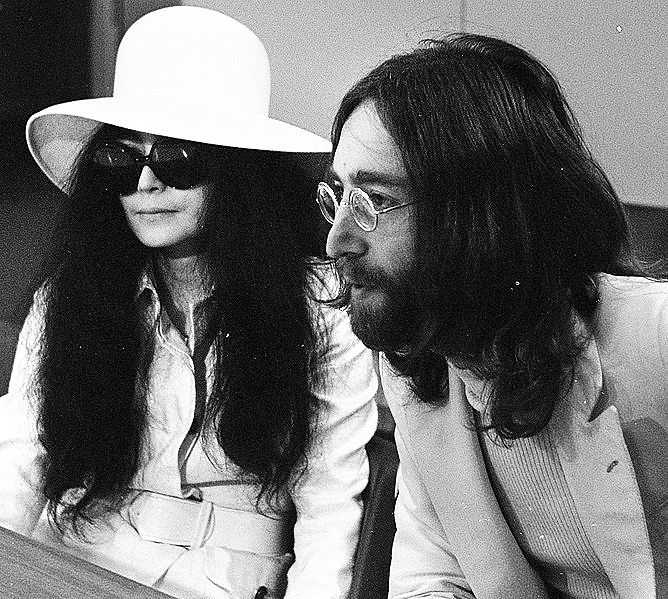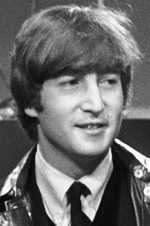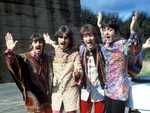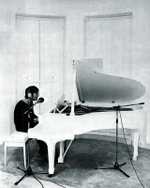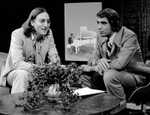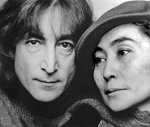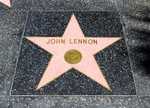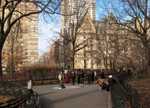1. Lennon's early life
John Winston Lennon was born on 9 October 1940, in Liverpool, England, during a German air raid in World War II.
He was born to Julia and Alfred Lennon, who named him John Winston Lennon after his paternal grandfather, John "Jack" Lennon, and Prime Minister Winston Churchill.
Lennon’s childhood was tumultuous. His father was a merchant seaman who was absent throughout most of Lennon’s life. When he was four years old, Lennon's parents separated and he ended up living with his Aunt Mimi. Lennon's mother, Julia, remarried but visited him and Mimi regularly.
Lennon displayed his artistic side from a young age. He often drew comical cartoons that appeared in his own, self-made school magazine called the Daily Howl.
Lennon’s mother Julia also encouraged her son’s artistry, teaching him how to play the banjo and the piano on her visits to Mimi’s. She even purchased his first guitar, and introduced him to Elvis Presley and Fats Domino.
Elvis Presley's explosion onto the rock music scene inspired a 16-year-old Lennon to create the skiffle band called the Quarry Men, named after his school. Lennon met Paul McCartney at a church fete in 1957, and invited him to join the group. The two eventually formed one of the most successful songwriting partnerships in musical history.
A year later, Lennon was devastated when his mother Julia was fatally struck by a car driven by an off-duty police officer in July 1958. The event influenced many of Lennon’s later songs, and was also one of the factors that cemented his friendship with Paul McCartney, who lost his mother to breast cancer at the age of 14. Lennon would later pen a song entitled Julia in honour of his mother.
After failing his O-level examinations, Lennon’s Aunt Mimi was able to get him accepted into the Liverpool College of Art by showing them some of his drawings.
John steadily grew to hate the conformity of art school. At the college, he started wearing Teddy Boy clothes and was threatened with expulsion for his behaviour. While there he also met his future wife, Cynthia Powell.
2. The Beatles and Beatlemania
Lennon’s group The Quarry Men later became The Silver Beetles (a tribute to Buddy Holly's Crickets) and soon afterwards was shortened to The Beatles.
A year after meeting Lennon, McCartney introduced him to George Harrison. Harrison and art college buddy Stuart Sutcliffe also joined Lennon's band. The first recording they made was a cover version of Buddy Holly's That'll Be the Day in 1958.
The Beatles were discovered by Brian Epstein in 1961 at Liverpool's Cavern Club, where they performed on a regular basis. Epstein secured a record contract with EMI. With a new drummer, Ringo Starr, and George Martin as a producer, the group released their first single, Love Me Do, in October 1962. It peaked on the British charts at No. 17.
The Beatles went on to become the most popular band in Britain with the release of subsequent hits as Please Please Me, She Loves You and I Want To Hold Your Hand.
Lennon married Cynthia Powell in August 1962 after she became pregnant. The couple had one son together, Julian, who was named after Lennon's mother.
In 1964, the Beatles became the first British band to break out big in the US, beginning with their appearance on television's The Ed Sullivan Show in 1964. Beatlemania launched a "British Invasion" of rock bands in the US that also included the Rolling Stones and the Kinks. Following their appearance on Sullivan, the Beatles returned to Britain to film their first film, A Hard Day's Night (1964), and prepare for their first world tour.
The Beatles' second film, Help!, was released in 1965. That June, Queen Elizabeth II announced that the Beatles would be named a Member of the Order of the British Empire. In August 1965, the foursome performed to 55,600 fans at New York's Shea Stadium, setting a new record for largest concert audience in musical history. When the Beatles returned to England, they recorded the breakthrough album Rubber Soul (1965), noted for extending beyond the love songs and pop formulas for which the band was previously well-known.
By 1966, the magic of Beatlemania started to lose its appeal after Lennon's remark that the band was "more popular than Jesus now" caused Beatles records to be thrown on bonfires in the US Bible belt. The Beatles gave up touring after a concert at San Francisco's Candlestick Park the same year.
After an extended break, the band returned to the studio. Never ones to shy away from experimenting, The Beatles also channelled different genres during their 13 studio albums including pop, classical, Indian music, psychedelia and hard rock. The album Sgt. Pepper's Lonely Hearts Club Band (1967), considered by many to be the greatest rock project in musical history, followed the hit single Strawberry Fields Forever.
The Beatles suffered a huge blow when Epstein died of an accidental overdose of sleeping pills on August 27, 1967. McCartney took on the leadership role and the group filmed Magical Mystery Tour.
Magical Mystery Tour failed to achieve much commercial success, and the Beatles retreated into Transcendental Meditation and the Maharishi Mahesh Yogi, which took them to India for two months in early 1968. In November 1968, the Beatles' double-album The Beatles (also known as The White Album) displayed their divergent directions.
That year, Lennon also divorced Powell, and married the Japanese avant-garde artist Yoko Ono in 1969. Lennon and Ono invented a form of peace protest by staying in bed while being filmed and interviewed, and released their single "Give Peace a Chance" (1969). The presence of Ono, who always accompanied Lennon in the studio, caused tension amongst the group.
Lennon left the Beatles in September 1969, just after the group completed recording Abbey Road. The news of the break-up was kept secret until McCartney announced his departure in April 1970, a month before the band released Let It Be, recorded just before Abbey Road.
3. His Solo Career
Lennon released his debut solo album, John Lennon/Plastic Ono Band, soon after leaving the Beatles. He followed it up with 1971's Imagine, the most commercially successful and critically acclaimed of all Lennon's post-Beatles efforts.
Imagine also included the track "How Do You Sleep?," a response to veiled messages at Lennon in some of McCartney's solo recordings. Although the former songwriting duo later buried the hatchet, they never formally worked together again.
During his time recording with his second wife, Lennon’s songwriting became very political. Lennon and Ono moved to the United States in September 1971, and released their Anti-Vietnam War song "Happy Xmas (War Is Over)" single in December.
Some Time in New York City was released as a double LP in 1972, containing songs about women's rights, race relations, Britain's role in Northern Ireland and Lennon's difficulties in obtaining a green card (which he was denied due to his activism but finally granted in 1976).
Two more albums of personal songs, Mind Games and Walls And Bridges, and one of cover versions of rock and roll songs of his youth, came before 1975 when he and Ono welcomed their son, Sean Lennon. Lennon decided to leave the music business to focus on being a father and house husband.
He returned to the music scene in 1980 when he and Ono produced Double Fantasy, a concept album dealing with their relationship. Tragically, just a few weeks after the album's release, a fan, Mark David Chapman shot Lennon several times in front of his apartment complex in New York City. Lennon died at New York City's Roosevelt Hospital on 8 December, 1980, at the age of 40. When Lennon died his remains were cremated and his ashes were scattered in New York's Central Park, where the Strawberry Fields memorial was later created.
4. Lennon's legacy
As the founder of the best selling-band in history and arguably the driving force of the Beatles, Lennon’s influence was wide and far-reaching.
His way with lyrics and the power of his words was inimitable, earning him numerous accolades throughout his lifetime and a BBC poll identified the UK's favourite song lyric as "Imagine".
Lennon also produced musings in various formats including short stories, poetry, plays and drawings. After his death, a series of works were published, including Skywriting by Word of Mouth (1986), Ai: Japan Through John Lennon's Eyes: A Personal Sketchbook (1992), with Lennon's illustrations of the definitions of Japanese words, and Real Love: The Drawings for Sean (1999).
In honour of Lennon’s legacy, Yoko Ono and the BMI Foundation, in 1999, established an annual music competition programme for songwriters of contemporary musical genres to honour John Lennon's memory and his large creative influence. Over $400,000 has been given through BMI Foundation's John Lennon Scholarships to talented young musicians in the US.
In his home town of Liverpool, the airport was renamed the Liverpool John Lennon Airport in honour of the legendary musician, and the John Lennon Peace Monument was unveiled in Chavasse Park.
Lennon was not afraid to speak his truth and express too the uncomfortable truth of what was going on in the world and address his concerns, including racial segregation in the US. The Beatles refused to do a gig in the US unless the audience were integrated as one. His anti-war stance and his desire for peace in the world has inspired people worldwide to take a stand for what they believe in.

